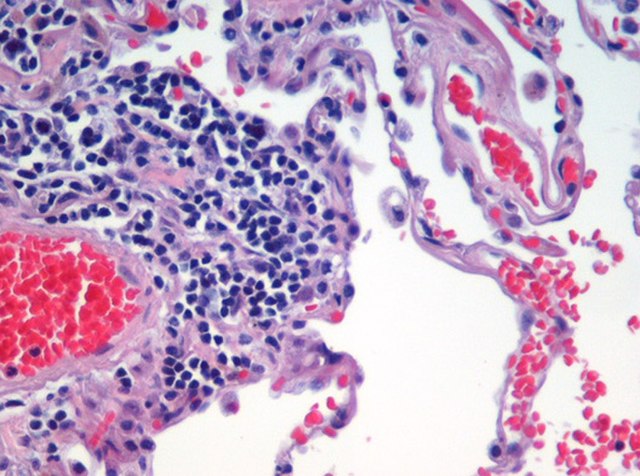Eosin is the name of several fluorescent acidic compounds which bind to and form salts with basic, or eosinophilic, compounds like proteins containing amino acid residues such as arginine and lysine, and stains them dark red or pink as a result of the actions of bromine on eosin. In addition to staining proteins in the cytoplasm, it can be used to stain collagen and muscle fibers for examination under the microscope. Structures that stain readily with eosin are termed eosinophilic. In the field of histology, Eosin Y is the form of eosin used most often as a histologic stain.
Eosin Y solution for staining microscopy slides
In his Field with Irises near Arles painting, Van Gogh incorporated red eosin dye into the color of the irises depicted at the bottom of the painting. Due to eosin's tendency to fade, the petals have now attained a blueish hue from their original purple coloration.
Histology,
also known as microscopic anatomy or microanatomy, is the branch of biology that studies the microscopic anatomy of biological tissues. Histology is the microscopic counterpart to gross anatomy, which looks at larger structures visible without a microscope. Although one may divide microscopic anatomy into organology, the study of organs, histology, the study of tissues, and cytology, the study of cells, modern usage places all of these topics under the field of histology. In medicine, histopathology is the branch of histology that includes the microscopic identification and study of diseased tissue. In the field of paleontology, the term paleohistology refers to the histology of fossil organisms.
Histologic specimen being placed on the stage of an optical microscope.
Human lung tissue stained with hematoxylin and eosin as seen under a microscope.
Histologic section of a plant stem (Alliaria petiolata).
Histologic section of a fossilized invertebrate. Ordovician bryozoan.






